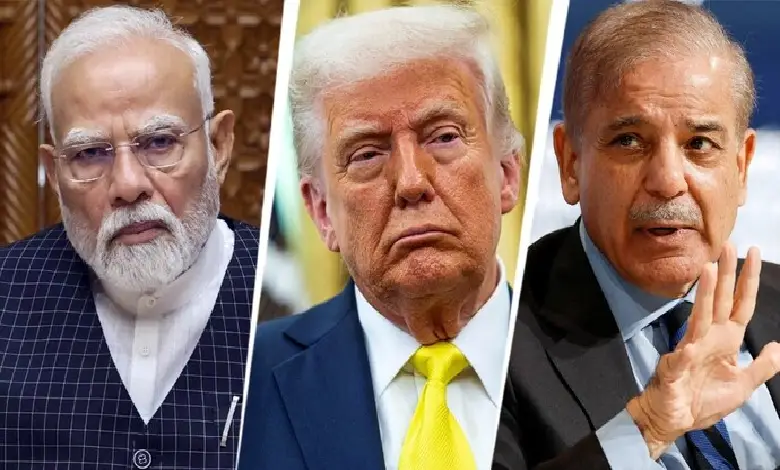After days of heightened cross-border conflict, India and Pakistan agreed to a ceasefire on Saturday—an announcement welcomed by US President Donald Trump. Trump praised the “strong and unwaveringly powerful leadership” of both nations and said he would substantially boost trade with the two countries. He also expressed willingness to help resolve the long-standing Kashmir issue.
The ceasefire agreement was reached after Pakistan’s Director General of Military Operations (DGMO), Major General Kashif Abdullah, initiated a call with his Indian counterpart, Lieutenant General Rajiv Ghai. During the conversation, they agreed to suspend military actions across land, air, and sea starting at 5 pm IST on Saturday.
However, the ceasefire was short-lived. Just hours later, reports emerged of violations from the Pakistani side, with shelling observed in areas like Rajouri, Akhnoor, and RS Pura. Indian forces responded swiftly, intercepting drones and retaliating against provocations. Air-defence systems were activated in several cities, accompanied by widespread blackouts and sirens.
Trump Praises Both Countries for Powerful Leadership
Trump posted following the development, stating, “I am very proud of the strong and unwaveringly powerful leadership of India and Pakistan… to stop the current aggression that could have led to the death and destruction of so many, and so much. Millions of good and innocent people could have died! Your legacy is greatly enhanced by your brave actions.” He further added, “While not even discussed, I am going to increase trade, substantially, with both of these great Nations.”
In the same post, he offered to help both countries find a resolution to the Kashmir issue, which has plagued the region for decades. “I will work with you both to see if, after a ‘thousand years,’ a solution can be arrived at concerning Kashmir.”
The ceasefire came in the wake of India’s counter-terror operations, launched after a deadly attack in Pahalgam, Jammu and Kashmir, on April 22 that left 26 people, mostly Hindu tourists, dead. India blamed Pakistan-based terror groups for the attack and responded with “Operation Sindoor”—a targeted strike against terror infrastructure in Pakistan-occupied Kashmir and even within Pakistan itself.
Pakistan Attacked with Drones
Pakistan retaliated with artillery fire and drone strikes, reportedly targetting civilian areas in India. In response, Indian forces hit military facilities inside Pakistan, causing significant damage. Despite these exchanges, Indian authorities maintained that their operation targetted only terror hubs and not civilian or military installations.
Indian External Affairs Minister S. Jaishankar reiterated that New Delhi would not compromise on national security. He stated that the military’s actions were strictly aimed at dismantling terror camps and added that India’s “red lines” were clearly communicated. “The operation was specific and limited. There should be no doubt about our intent,” he said.
The US played a quiet but influential role during the crisis. According to a CNN report, American Vice President JD Vance contacted Prime Minister Narendra Modi after receiving intelligence about a potential large-scale escalation from the Pakistani side. Reports suggest that Washington encouraged restraint, although Indian officials insisted that the ceasefire was negotiated directly between the two DGMOs, without third-party mediation.
Pakistan Confirmed Ceasefire by Social Media Post
Pakistan’s Deputy Prime Minister and Foreign Minister Ishaq Dar confirmed the ceasefire through a social media post. “Pakistan and India have agreed to a ceasefire with immediate effect. Pakistan has always strived for peace and security in the region, without compromising on its sovereignty and territorial integrity,” he wrote.
Foreign Secretary Vikram Misri later addressed the media, outlining the terms of the agreement. “There will be no military activity on land, air or sea,” he said, confirming the ceasefire would take effect at 5 pm IST. He also noted that both sides had agreed to reconnect on May 12 for a follow-up call.
Meanwhile, US Secretary of State Marco Rubio, who is also serving as interim National Security Adviser, coordinated closely with other senior officials including Vice President Vance and White House Chief of Staff Susie Wiles. According to American sources, the US persuaded both countries to begin broader discussions at a neutral venue. However, Indian authorities denied this, stating no such agreement was made.
India: “Ceasefire a Result of Bilateral Dialogue”
Despite President Trump’s claims of potential mediation, New Delhi emphasised that the ceasefire was a direct result of bilateral dialogue initiated by Islamabad. “The Pakistan DGMO initiated the call this afternoon… and an understanding was reached,” a senior Indian official said, adding, “There were no pre-conditions or post-conditions.”
Trump’s enthusiastic endorsement of the peace initiative reflects his broader ambitions in South Asia. His declaration that “God Bless the leadership of India and Pakistan on a job well done!!!” signals not just a desire for de-escalation but also his intent to deepen America’s economic ties with both nations.
As both countries return to a tense calm, the situation remains fragile. While leaders have pledged peace, past ceasefires have frequently broken down under the weight of deep-rooted mistrust and unresolved disputes, particularly in Kashmir.


